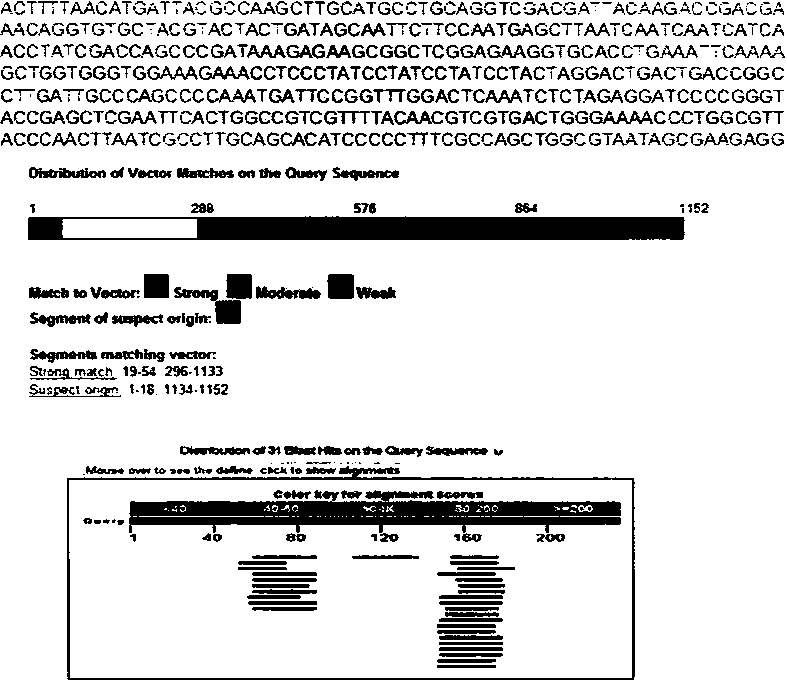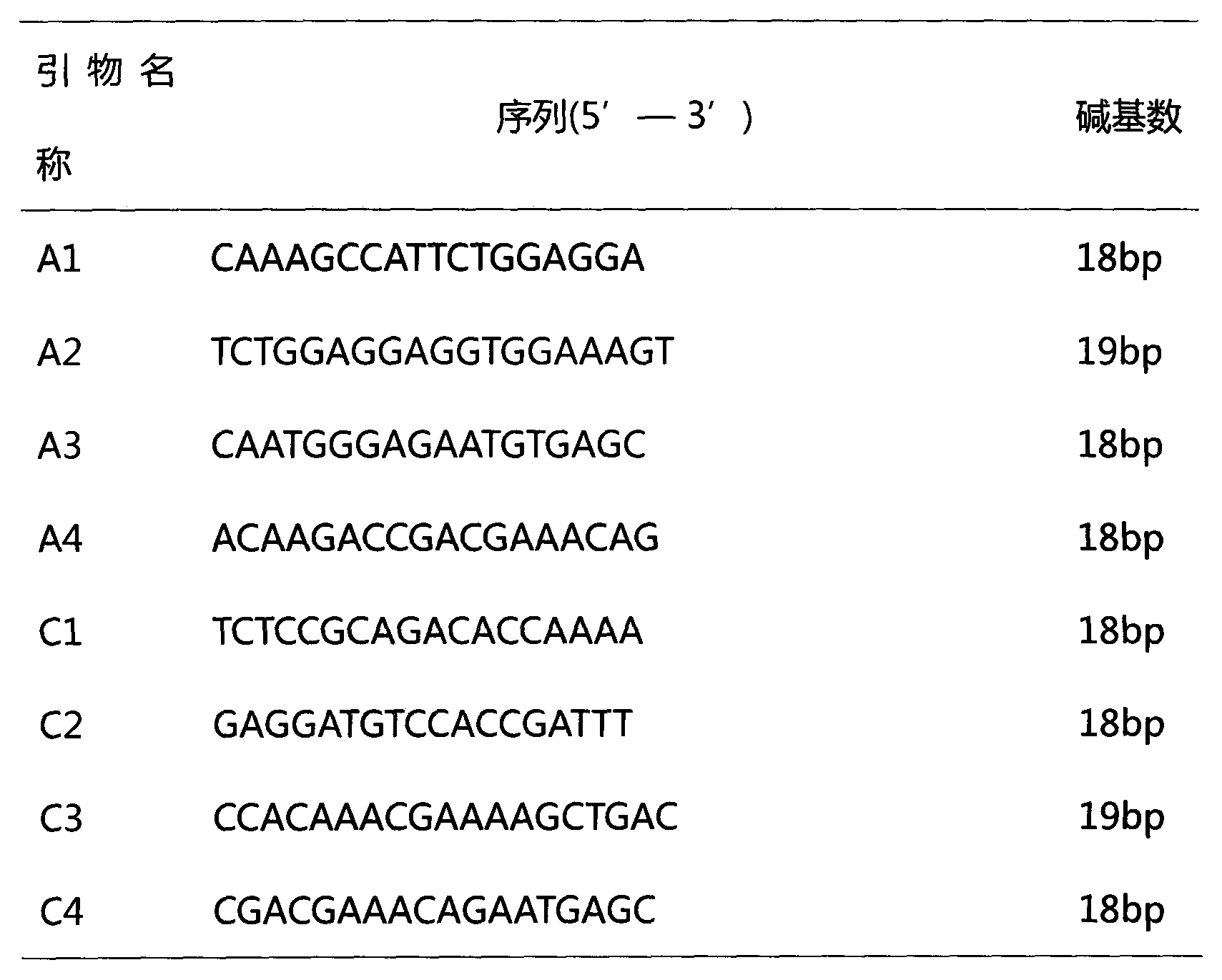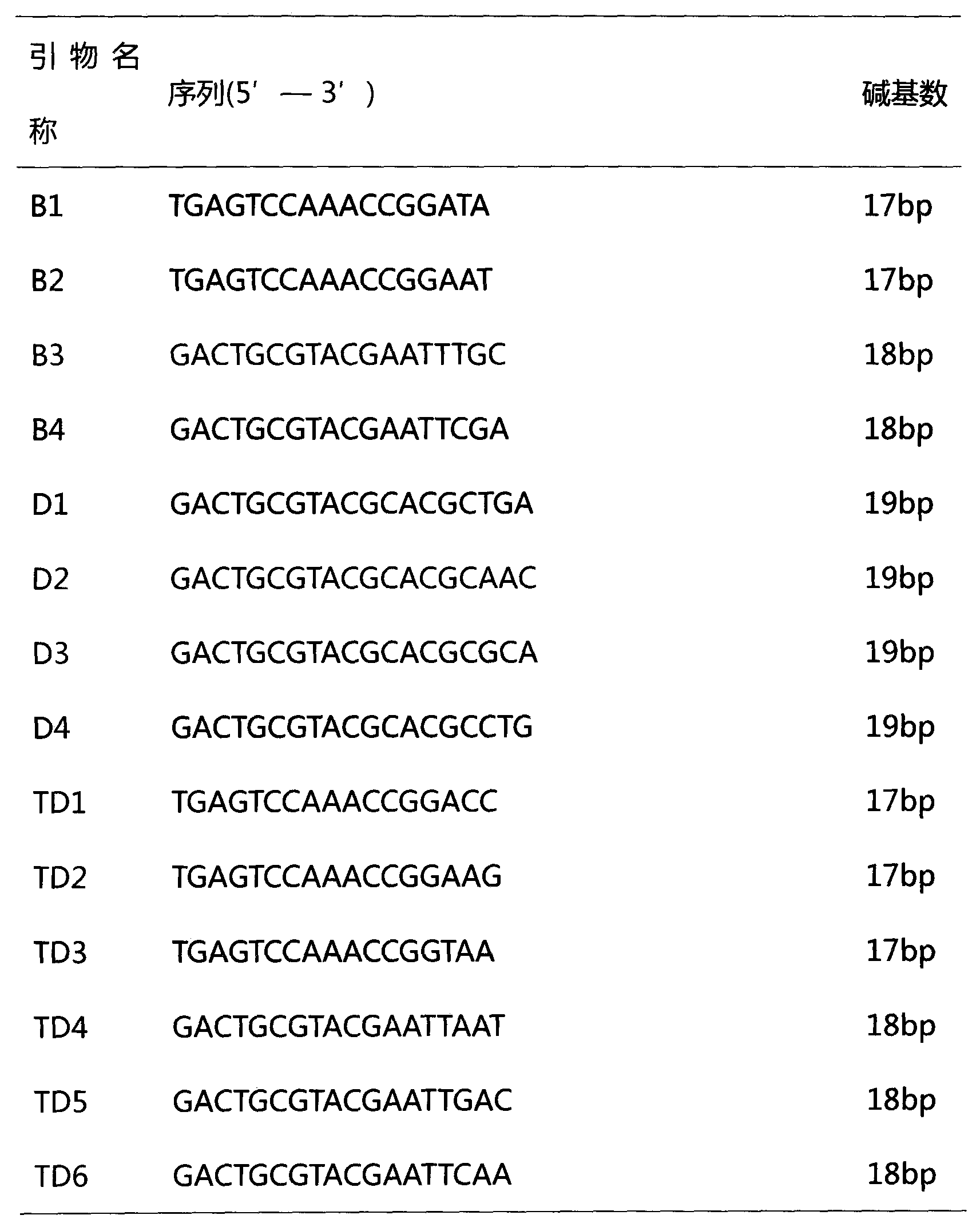Chromosome specific marker of elytrigia elongata in wheat background and use thereof
A technology of E. elongatum and specific markers, applied in the field of crop genetics and breeding, can solve the problems of small quantity, chromosome specificity and unsatisfactory stability, etc., and achieve the effect of simple operation, excellent marker resources, and superior stability
- Summary
- Abstract
- Description
- Claims
- Application Information
AI Technical Summary
Problems solved by technology
Method used
Image
Examples
Embodiment 1
[0050] The design of embodiment 1 primer
[0051] Such as figure 1 Shown is the principle of primer design based on TRAP technology, 8 fixed primers were designed according to the EST sequence of Echinopsis elongatum, and the number of bases was between 18-19. figure 2 Shown is a total of 14 random primers designed according to the SRAP primers published in the literature (G.Li·C.F.Quiros, 2001), and the number of bases is between 17-19. Such as image 3 Shown are a total of 56 pairs of primers randomly combined by fixed primers and random primers. 56 primer combinations were combined with 18 basic primers for PCR amplification, and 21 primer combinations with specific amplification of E. elongatum were selected. The above primers are kept in the Laboratory of Molecular Cytogenetics, School of Biotechnology, Yangzhou University.
Embodiment 2
[0052] The extraction of embodiment 2 genome DNA
[0053] Genomic DNA was micro-extracted by the SDS phenol-chloroform method. The steps are as follows:
[0054] (1) Take the young leaves (about 0.1g), cut them into pieces and put them into a 2ml centrifuge tube, cool them in liquid nitrogen, and grind them to powder with a grinding rod;
[0055] (2) Place the centrifuge tube at room temperature to cool slightly, add 700 μl of buffer A, mix gently, then bathe in water at 65°C for 20 minutes, and mix by inverting up and down every 5 minutes;
[0056]
[0057] (3) Take it out and cool it down to room temperature, add 350 μl of phenol and chloroform each, turn it upside down, mix well, and extract for 5 minutes;
[0058] (4) 12000rpm, centrifuge for 10min, draw the supernatant into a new centrifuge tube;
[0059] (5) Add about 750 μl of chloroform, turn it upside down, mix well, and extract for 5 minutes;
[0060] (6) 12000rpm, centrifuge for 10min, draw the supernatant in...
Embodiment 3
[0065] Example 3 PCR Amplification of Specific Fragment of Echinopsis elongatum
[0066] in accordance with image 3 PCR amplification was performed after the combination of primers. Such as Figure 4 Shown is a 25μl PCR reaction system, which is the most basic reaction system for PCR. Figure 5 Shown is a 35-cycle reaction program according to the TRAP technique in the literature (Hu et al., 2003). After the PCR reaction, the PCR product was detected by 6% polyacrylamide gel electrophoresis, such as Figure 6 Shown are the specific fragments of E. elongatum 1E-7E and the whole genome chromosome amplified by each primer combination, among which 1-7 are Chinese spring-Elongatum elongatum disomic addition lines, 8 is Chinese spring, and 9 is Elongatum elongatum Wheatgrass, A-G represent the specific markers of 1E-7E respectively, and H represents the specific markers of the whole genome. It can be seen from the figure that each chromosome has its own unique fragments, which ...
PUM
 Login to View More
Login to View More Abstract
Description
Claims
Application Information
 Login to View More
Login to View More - R&D
- Intellectual Property
- Life Sciences
- Materials
- Tech Scout
- Unparalleled Data Quality
- Higher Quality Content
- 60% Fewer Hallucinations
Browse by: Latest US Patents, China's latest patents, Technical Efficacy Thesaurus, Application Domain, Technology Topic, Popular Technical Reports.
© 2025 PatSnap. All rights reserved.Legal|Privacy policy|Modern Slavery Act Transparency Statement|Sitemap|About US| Contact US: help@patsnap.com



